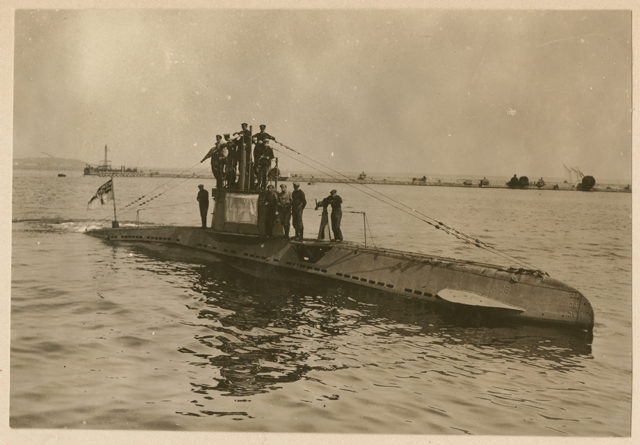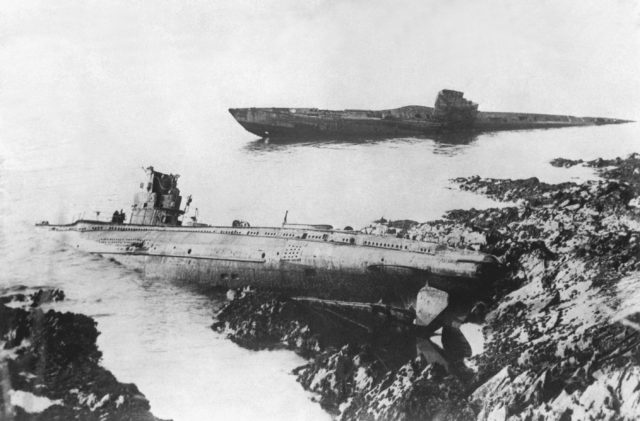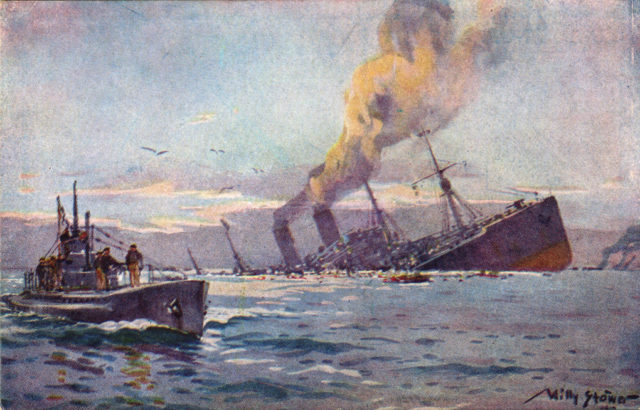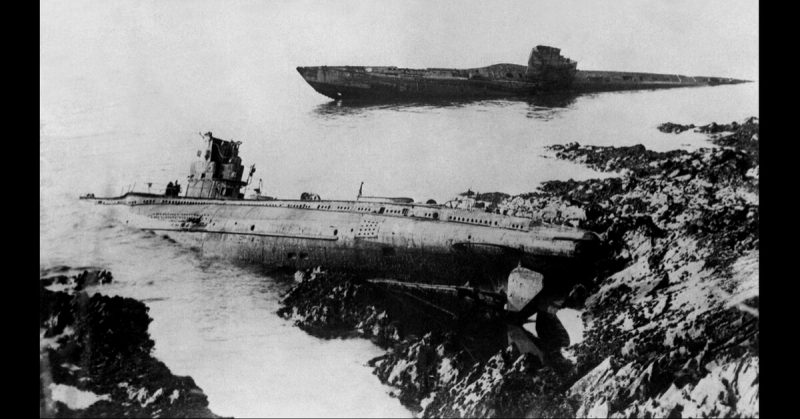One of the most terrifying things about naval combat during the First World War was the constant threat of U-boats, hidden beneath the ocean. Germany built a powerful and deadly submarine force, and used them to devastating effect against the Allied forces. Of course, the success of their U-boats would ultimately lead to their downfall, but to this day submarines remain one of the most fascinating and groundbreaking technological developments to come out of the conflict. From the first submarine ever invented to the U-boat attacks that turned the tide of the war, here are four facts about the deadly German submarines of the First World War.
First Blood
The first ship to be torpedoed and sunk by a U-boat was HMS Pathfinder, a British vessel that met her end on the 5th of September, 1914. A German U-boat, SM U-21, had been infiltrating the waters around the east coast of Scotland, even traveling up the Firth of Forth undetected. Eventually, their periscope was spotted and they came under fire briefly, but the submarine managed to slip away and continued its progress.
Finally, it turned around and headed back towards the sea. It was at this point that the commanding officer, using their periscope, caught sight of the Pathfinder in the distance. He decided to engage – history was about to be made.
The U-boat fired a torpedo at a range of 2000 yards, and by the time the lookouts aboard the British vessel had spotted it, they had little hope of out-maneuvering it. A temporary coal shortage in the Royal Navy had forced the Pathfinder to travel at a relatively slow pace, making it even harder to avoid the oncoming torpedo. The crew attempted to get the ship clear, but to no avail. They were struck, and the initial blast triggered an even larger explosion within the vessel.
HMS Pathfinder split into two pieces, going down with the majority of her crew.
The Fire Diver
Today, submarines are an integral part of naval forces all around the world. However, it was Germany that built the earliest model, before going on to use them extremely effectively throughout the First World War.

In 1850, more than six decades before the outbreak of that terrible conflict, a German ex-cavalryman and engineer named Wilhelm Bauer invented the first submarine. He designed it as a way to get past Danish shipping blockades, and after a demonstration in Kiel Harbour, the first U-boat was granted the funding it needed to be developed further.
However, the money allocated for building a larger version of Bauer’s so-called Brandtaucher – “Fire Diver” in German – was inadequate. Corners had to be cut, and several key design elements were scrapped. As a result of this, water taken in by the vessel was allowed to fill the lower level of the hull without any form of containment, and this made Brandtaucher’s motion much more unstable.
In the end, this may have been its undoing. When the submarine was tested, once again in Kiel Harbour, it sank to the bottom and Bauer barely escaped with his life.
The Death-Trap

While German U-boats certainly posed an enormous threat to Allied ships – both naval and commercial – they could also be extremely dangerous for the crews that manned them. In small and confined spaces deep under the sea, mechanical failures could prove fatal.
For example, the electronic batteries with which the submarines were fitted could be a major risk if they malfunctioned. They were stored under the crew’s living quarters, and the gas they could emit would sometimes lead to explosions. Furthermore, if they were contaminated with seawater they could produce chlorine gas, making time spent submerged even more hazardous than it was already.
Although many more lives were lost on land, the proportion of submariners killed was still very high, with around 30% of Germans serving on U-boats dying in action. Between the dangers of sea battles and the risks of potentially fatal technical problems, serving on a submarine was an extremely perilous business.
The Turning Point

Although America had initially avoided any direct involvement with the war, as the years went by it looked increasingly likely that they would join on the side of the Allies. This would spell disaster for the Germans, as US troops flooding into Europe would almost certainly turn the tide against them. With this in mind, it became a priority to force British into surrendering at the earliest opportunity.
If Germany could get their enemy to seek terms before the American government decided to wade in, they could still win the war.
A German Vice-Admiral – Reinhard Scheer – believed that an intensive U-boat campaign was the only answer. As a result, between October 1916 and January 1917 they managed to sink roughly 1.4 million tons of shipping. This still wasn’t enough to make Britain surrender, however, so they redoubled their efforts in February 1917.
Ironically, it was the all-out submarine warfare the Vice-Admiral had proposed that pushed America into the conflict. One month later, German U-boats sunk three US merchant ships, and the very thing they’d been hoping to avoid took place. America declared war on Germany.
